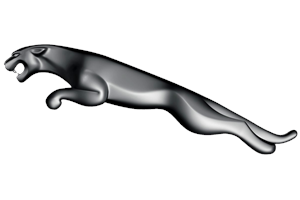


This edition of the Jaguar E Type 3.8l Coupe is the 4 speed / Manual version and was first brought out in 1961. This was at around the same time as the introduction of the 1962 Chevrolet Corvette C1 327 V8 and the 1962 Ferrari 250 GTO.This particular Jaguar E Type has a 3781cc Naturally Aspirated Petrol powerplant with 6 cylinders in a St formation.
The E Type shares its Petrol St6 engine configuration with the likes of the 1965 Aston-Martin DB6 1965 and the . If you're looking for other fast cars which share the E Type's Rear Wheel Drive, Coupe combination then how about the 1982 Fiat X1/9 1.5 8V or the 1965 Aston-Martin DB6 1965.
Weighing in at 1234 kgs (2720 lbs) this makes the Jaguar E Type 3.8l Coupe in the same weight category as the 2020 Audi A1 A1 Sportback 35 TFSI S tronic S line or the give or take 50kg.
In terms of power the 3781cc 12V St6 engine produces 265 bhp (197 kW) @ 5500 rpm similar to the 2022 Hyundai i30 N Performance 2.0 Turbo (276 bhp) or the 2021 KIA K5 GT 2.5 Turbo (290 bhp).
The Naturally Aspirated St6 throws out 260 lb-ft (352.5 Nm) @ 4000 rpm placing it with cars of similar torque performance figures such as the 2023 Toyota Corolla GR Circuit Edition 1.6 Turbo (273 lb-ft) or the 2022 Toyota Corolla GR 1.6 Turbo (273 lb-ft).
If one combines the weight with power or torque performance for the Jaguar E Type you can get a better idea of it's real world performance.
![Lotus Evora S IPS 3.5 V8 - [2011] image Lotus Evora S IPS 3.5 V8 - [2011] image](/editionimages/1037.jpg)
The 2011 Lotus Evora S IPS 3.5 V8 (239.2 bhp per ton) has similar Bhp Per Ton stats as the Jaguar E Type.
The Jaguar E Type has a Power to weight ratio of 214.7 bhp per ton and 210.6 lb-ft per ton. Bhp Per Ton figures of the 1961 E Type competing with the 2011 Lotus Evora S IPS 3.5 V8 (239.2 bhp per ton) or the 1984 Ferrari Testarossa 5.0L Boxer (239.2 bhp per ton).
If you agree with the late great Carroll Shelby then arguably an even better indicator of potential performance, Torque. Use weight as well and you end up with - Torque per ton, with the Jaguar E Type generating around 210.6 lb-ft per ton. If you're curious as to what other cars have as much torque to weight then look no further than the 2009 Jaguar XF 3.0d V6 Auto (235.6 lb-ft per ton) or the 2007 Bentley Continental GT Speed 2d Auto (235.3 lb-ft per ton).
With a 0-60mph time of 6.90 secs or a 0-100km/h (0-62mph) of 7.1 secs, this made the Jaguar E Type 3.8l Coupe as fast as the 2015 Audi TT 1.8 TFSI Coupe (6.90 secs) the 2013 Land-Rover Range Rover Sport 3.0 V6 Supercharged (6.90 secs) the 2012 Ford Fiesta ST 1.6 Turbo (6.90 secs) the or the 2009 Renault Clio 2.0 RenaultSport III 200 Cup (6.90 secs). This Jaguar E Type 3.8l Coupe is also faster than the 2020 Alfa-Romeo Giulia 2.2 16v Turbo Diesel (7.00 secs) the 2015 Mazda MX5 2.0i Roadster Coupe (7.00 secs) the 2013 Seat Leon SC 1.8 FR Start-Stop DSG (7.00 secs) the and the 2012 Volkswagen-VW Golf GTi Cabriolet DSG (7.00 secs).
When talking about the performance of the Jaguar E Type on the drag strip it can reach a quarter mile in an estimated 13.69 secs @ 99.9 mph. Similar performance down the quarter mile can be found with the the 1969 Buick GS 455 Stage 1 7.5 V8 (13.65 secs), the 2009 Infiniti G37 3.7 V6 S (13.66 secs), and the 1985 BMW 5 Series M5 E28 (13.66 secs).
Modern performance cars are often artificially restricted to 155mph. The 1961 version of the Jaguar E Type 3.8l Coupe has a maximum speed of 150mph.
If maxing out your car on the AutoBahn is your thing and you're wondering what's faster than the 1961 Jaguar E Type 3.8l Coupe then how about the 2013 Porsche Panamera Diesel 3.0 V6 Turbo (161 mph), the 2013 Porsche Panamera 3.6 V6 (161 mph), or the 2011 Radical SR3 SL 2.0 Turbo (161 mph).










Jaguar F Type Supercharged 5.0 V8
Engine: Supercharged Petrol | 5000cc 32v V8
Top Speed: 177 mph
0-60mph: 4.40 seconds



















